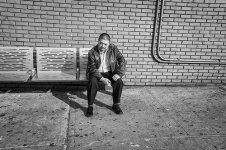Everyone's experiences were different back then Allen. I had many a friend get beat up for their cameras. Today, people might be used to seeing cameras around peoples' necks, but the situation of having one pointed at themselves has changed a great deal. Today it has become more contentious, litigious, and down right religious 🙂D). Look at all the cities passing laws about photographing people and places without consent.
Allen, I found the city to be a lot more interesting 30 years ago. The people too. I wish then, I was a bit more "mature" and dedicated like I am now. Who knows, maybe I was. Time does strange things. All those images from then are in storage. It would be interesting to see them again....


